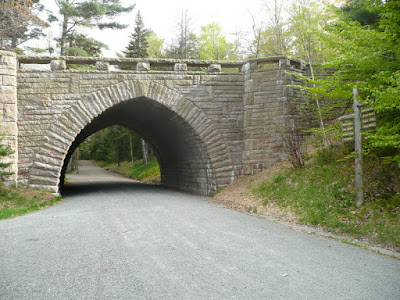Friday, May 27, 2011
Carriage Roads
Forth-five miles of rustic carriage roads, the gift of John D. Rockefeller, weave around the mountains and valleys of Acadia National Park.
They are true roads, constructed with methods that required much hand labor.
Rockefeller wanted to travel on motor-free byways via horse and carriage into the heart of the island.
His construction efforts from 1913 to 1940 resulted in roads with sweeping vistas and close-up views of the landscape.
These roads are the best example of broken-stone roads—a type of road commonly used at the turn of the century—in America today.
Cedar signposts were installed at intersections to direct carriage drivers. Today, numbers that match guidebooks are attached to the posts and help hikers, bikers,skiers and carriage drivers find their way.
Rockefeller financed 16 of the 17 stone-faced bridges to span streams, waterfalls, roads and cliffsides.
They are steel-reinforced concrete, but the use of native stone for the facing gives them a natural appearance.
Two impressive gate lodges were also built as entrances to the system.
We unloaded our camper in the campground so we could pass under these bridges, some as low as 10 feet. Just another reason we like our camper so much.
Subscribe to:
Post Comments (Atom)













No comments:
Post a Comment